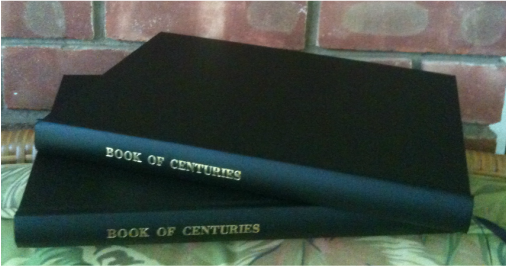It’s been almost a decade since I first tried to wrap my head around the Book of Centuries and blogged through that process here, here and here. Now I have a graduate, a YR11, YR7, and YR3 and am revisiting the topic, hopefully with a little more perspective.
What brought it all up again was these archived nature journal images in the CMDC I came across recently, I noticed that they looked similar to the the BOC.
How would I even notice that? Because I’ve manually lined the pages of blank notebooks for two kids’ BOCs (see my previous BOC posts linked above.) What was noticeable to me were the number of lines on each page: 23. It’s the ideal number for the BOC because it allows you to divide the page into a grid of 100 years. 20 lines x 5 years across. There is also enough space between the lines for writing in events, and most importantly, one side of each two page spread is blank for drawings.
BOC Versions
For my third child I ended up biting the bullet and buying Laurie Bestvater’s beautiful hardback BOC. At $37 plus shipping it is an investment. My friend had one she hadn’t used so I bought it from her.
I’m glad I did, it has saved me a lot of time lining pages!
Before this purchase, I looked at the Living Books Press Book of Centuries and purchased one of those because of it’s affordable price. At the time they only had one version. What I realized after purchasing it was that as the centuries progressed, the number of years per page changed. So instead of the standard 100 years per page, in the 1600s it changed to 50 years per page, then 20 years per page in the 1800s, and then 10 years per page in the 1900s. This is done to make more room for modern history, which we have much more known events in. You can see the page layout explained on the back cover as seen here:
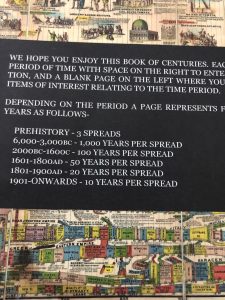
The concern with this is that skewing time this way distorts the child’s understanding of time. Modern times will seem much longer and more significant in the grand scheme of time, when in reality, they are but a blip!
In the PNEU’s pamphlet, “A Book of Centuries and How to Keep One” G.M. Bernau states:
“Naturally one page is a very small space in which to illustrate the whole of a century, and yet it is a mistake to leave two pages for some centuries, as I have seen done in some books, as it does away with the idea of the book…”
This is likely why they came out with another version here. I did order one of these and gave it away at our last local conference so I haven’t used it with any of my kids. It is a paperback and at $14.95 plus shipping, much more reasonable in price, but it does have a less personal, workbook quality to it.
It is also available as a download for $4.95 which you could print yourself of send to an office shop for printing and put whatever cover you want on it.
I found this dual lined notebook at one point, enticed by the alternating blank and lined pages, I bought one just to see, but the pages are thin and there are just too many lines per page to make it functional for a BOC.
So, those are the options for now. Maybe someone will come out with a PNEU notebook of sorts, perfect for the BOC someday? The interesting thing is, the BOC hasn’t gained widespread enthusiasm like the nature journal has. Maybe it’s the nature of the subject? Or maybe the book layout itself is just too confusing? Or is it a “practice” developed out of principle that never quite achieved it’s intended purpose?
The PNEU BOC
The following are BOC pages, courtesy of the Charlotte Mason Digital Collection, as shown in the PNEU pamphlet linked earlier. These pages have no lines.

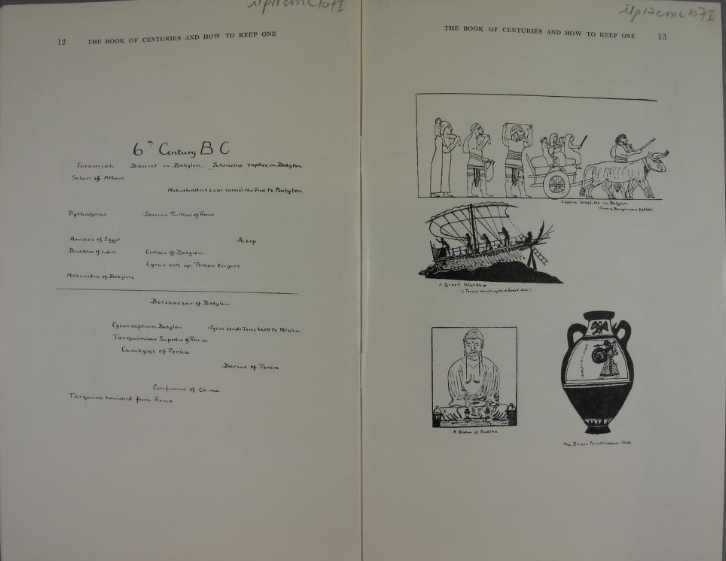
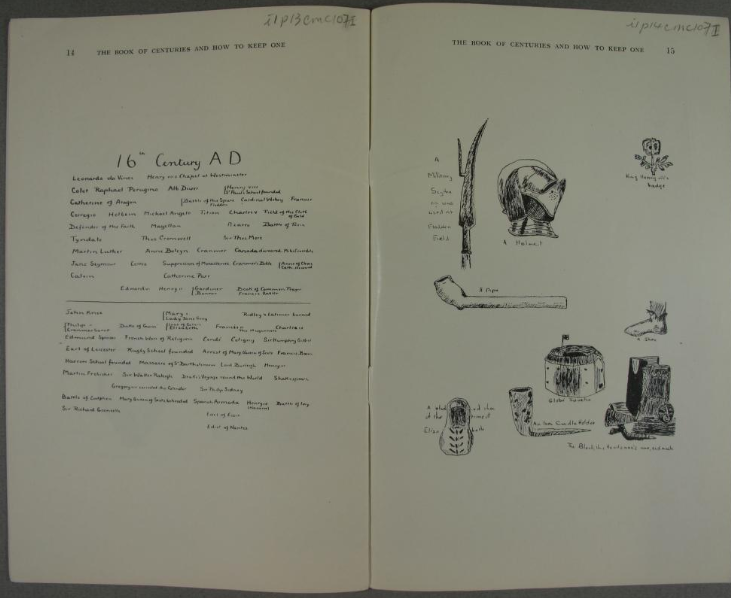
Here are a couple of pages from our kids’ BOCs. The first one was hand-lined into a blank notebook. The second is the one we purchased from www.Bookofcenturies.com
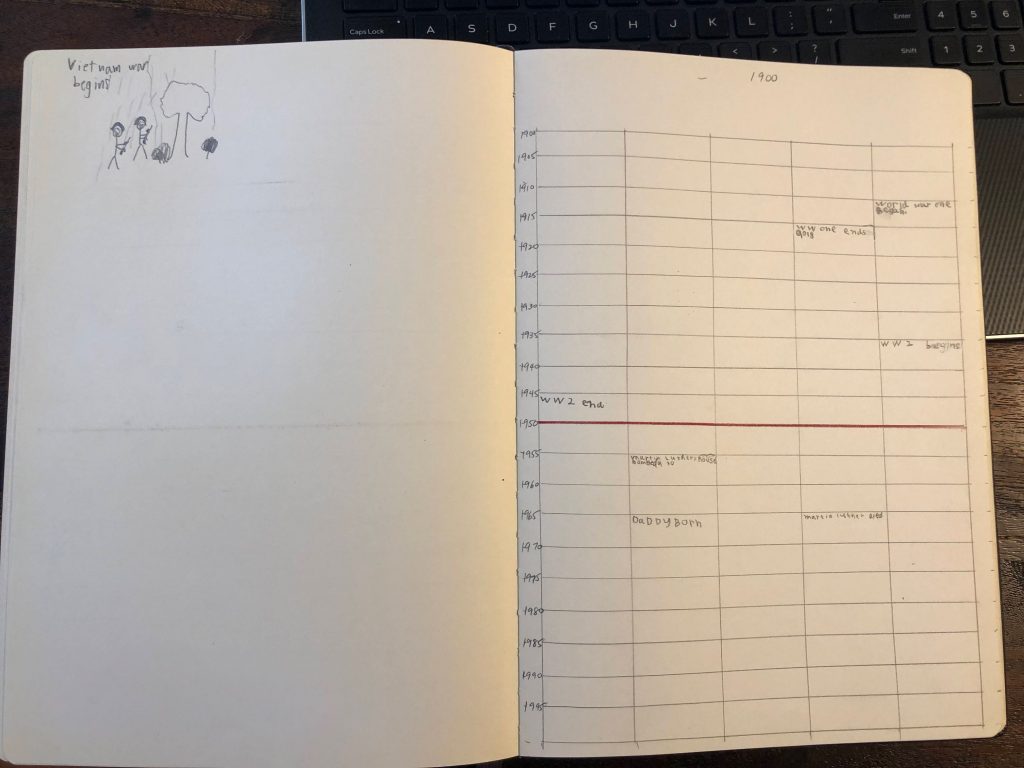
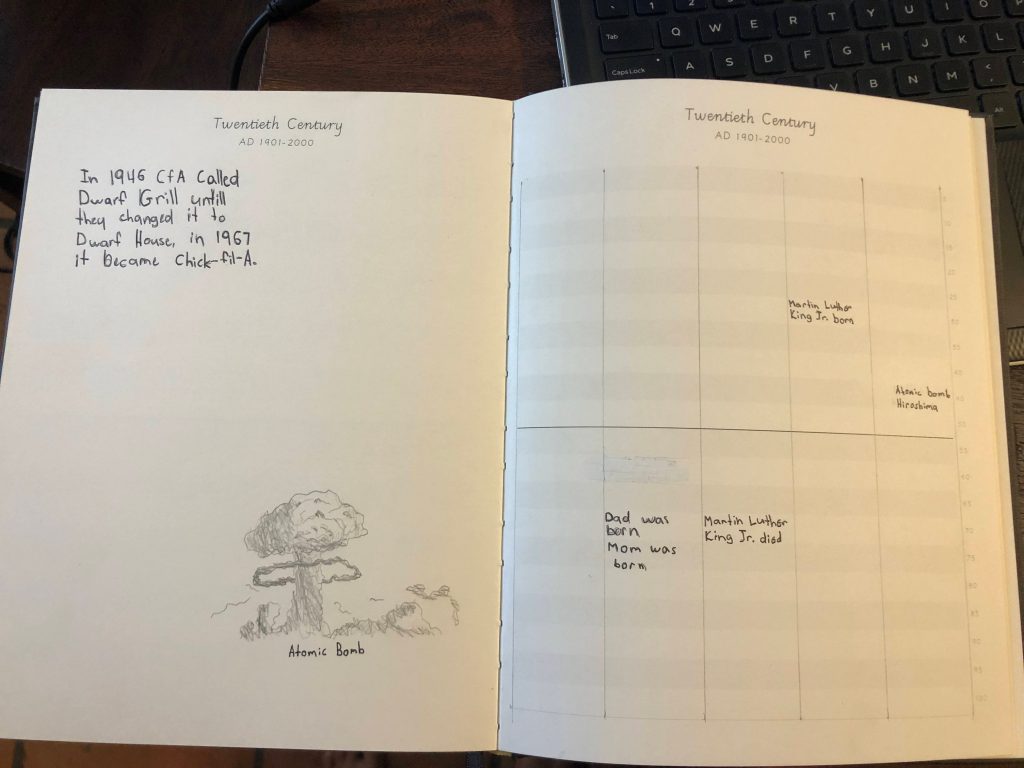
What is fascinating to me, and will likely be to my children when they become adults, is to look back and see these entries much later in life.
On one line in the 21st Century of my 17yo son’s BOC – a span of five years – he has the following entries:
- “Baba dies New Years Eve” (his grandmother)
- “Donald Trump elected President”
- “We started to surf”
- “I got a phone”
While these BOC’s are not as popular as the nature notebook, they are just as relational, personal and full of connections and ideas.
A Family Book
In the pamphlet linked earlier, G.M. Bernau wrote:
“I often wonder whether it would answer to keep a Family Book of Centuries while most of the children are away at boarding school, letting each add his or her contribution while they are at home for the holidays, initialing and dating it.”
I could see the idea of a family book like this being so meaningful.
In the end it’s the relations that matter aren’t they? People, connected to moments in time, connected to history, connected to each other, connected to memories.
